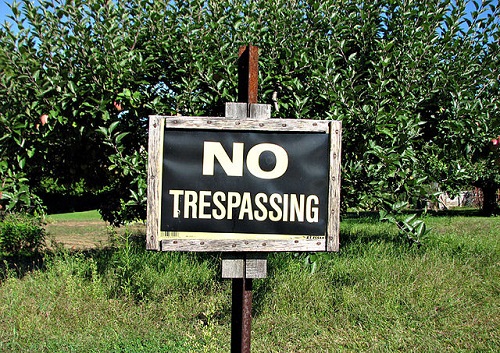Differences between Personal Property and Real Property
Property refers to anything that one can legally own. There are many types of properties but experts broadly categorize them as either real property or personal property.
It is vital to understand these property categories so that you can comprehend and easily follow them whenever they are the topic of discussion especially by property attorneys. Each type of property is treated differently as far as the law is concerned. For instance, there are many different laws that specifically apply to personal property while others relate specifically to real estate. Knowing and understanding the types of properties can help you decide which rules apply to what property and which policies and procedures are accessible for property rights violations. This article will discuss both personal and real property in depth, as well as outline the differences between the two types of properties.
What is Real Property?
Real property is immovable property. It describes land and things, such as buildings, that are attached to that land, which is the reason why land is sometimes called real estate. Although steel, wood and other building materials are not land in themselves, when constructed into structures attached to land, they become real property. Trees, as well as other plants that are naturally growing on the land in question, are also part of the real property. However, plants requiring consistent human labor such as vegetables and grains are not treated as part of the real property.
Therefore, when someone remarks real property, what they are talking about is land, a home, building, as well as mineral interests. All the materials used to construct any structure that is attached to a piece of land are also considered real property like mentioned above. Hence, the critical thing to remember is that real property is land and anything else attached to that land. Real property is referred to like real estate and is also fixed property – meaning it cannot be moved. For instance, farm structures in a farm are real property because they are attached to the land.
What is Personal Property?
Having understood what real property is, what then is personal property? Well, think of it as any movable property. Personal property, unlike real property, is not fixed or associated with land. Therefore, if real property is described as land and any property attached to land, then personal property is everything else apart from that.
Personal property, therefore, includes belongings of any kind, as long as they are movable and are owned by someone. Personal property is usually viewed as assets and can be used in defining the net worth of a person. Some examples of personal property include bank accounts, insurance policies, furniture and fixtures in the homes, stocks, vehicles, boats, collectibles, antiques, books and pensions. Adding on the example about farm structures above, farm animals would be personal and not real property. They can be moved from one place or farm to another.
It is important to note that personal property is further divided chattel and intangible property.
Personal Property: Chattels
About personal property, the term chattel refers to all kinds of tangible personal properties. Tangible personal property is a property that can be touched or felt. A furnace is a fixture that you can feel and touch. At the end of a lease period, a tenant usually has the right to remove fixtures that he/she installed even when there is no more right to the real property.
Another example let us say that a person buys lumber and other building supplies including a hammer, saw, and some nails. These materials are personal property. They are chattels since they are tangible and are moveable. In a business setting, chattels or tangible personal property can include business equipment, office furniture, business vehicles, business goods and more.
Extending this example, let us also say that this same person uses these tangible items to construct a shed on their land. Can we say that the shed personal property? No. The shed is real property. Because it is attached to and is now part this person’s land. Well, what about the building materials saw, hammer and leftover nails? Those are tangible personal property – they are movable, unlike the shed.
Personal Property: Intangibles
Intangibles personal property is the opposite of tangible property – cannot be seen or touched. It only involves a legal right. The fact that such kind of property exists is a reminder that, as far as the law is concerned, property mostly refers to legal rights and not physical things.
Intangible properties include bank accounts, insurance policies, franchises and licenses, intellectual property such as copyrights, patents, and trademarks. Bonds, stocks, promissory notes, and other similar documents merely represent intangible rights. Money is also treated as an intangible
Differences between Personal and Real Property
Now that we have understood the two types of properties, the next thing is to outline the differences between them. Although in trying to explain the meanings of the two types of property many differences have come up, we are going to outline those differences below. How many have you picked from the discussion above? Here are the major differences between personal and real property.
- Real property is immovable and is permanently attached to the land including a house, walls, blinds, windows, fixtures, doors, and more. On the other hand, personal property can be moved or taken from a home or business including furniture, artwork, light fixtures and more. It is not affixed in any way.
- Real property is mostly tangible while personal property is both tangible and intangible
- Real property is long lasting and durable while personal property is not necessarily durable
- Personal property is easy to understand – If a piece of property is not real property, then it is personal property.
- In legal considerations, both real and personal property follow different legal procedures.
- Real property cannot be hidden, but personal property can be hidden
Summary of differences between Personal Property and Real Property
Property can be categorized as real or personal.
Real property comprises of anything that is attached permanently to land such a home, a garage, shed or even a rose flower. Conversely, if it were movable, then it would be personal property. A rose bush is a real property unless if it is pulled out of its garden, which would make it personal property. That said anything that is movable represents personal property, while the immovable is real property.
Additionally, real property not only includes things that are permanent on your land but also includes whatever that is above or below it. If you have oil in your land, it is real property. You can dig up your land to extract and acquire the oil. Even if it weighs tones, personal property mostly deals with movable things, long as they are not attached to the land.
These rankings enable smooth legal procedures. For instance, if you are looking to buy a home with a swing and slide set in the backyard, the seller of the house has every right to take it if it was not bolted permanently unless it is indicated in the contract as part of the house.
In addition, when buying land, many people have a habit of concentrating more on what is beneath the land. Because the land could be having minerals such as oil, gas, coal or any other below the ground and such minerals could make the land worth more than the property itself. In such a situation, the selling price and the buying prices of that land must change and will be affected. Even the legal policies such as contract agreements will also change.
- Difference between Traditional Commerce and Ecommerce - February 16, 2018
- The Differences between Copay and Deductible - February 6, 2018
- Differences between Personal Property and Real Property - January 29, 2018
Search DifferenceBetween.net :
2 Comments
Leave a Response
References :
[0]ABC Real Estate. "Real Property vs. Personal Property." December 2002. www.realestateabc.com. Webpage. 28 December 2017.
[1]Nelson Law Group, P.C. "What’s The Difference Between Real And Personal Property?" 17 February 2017. nelsonlawgrouppc.com. Webpage. 28 December 2017.
[2]"Image Credit: http://valarie4pittman0.wikidot.com/"
[3]"Image Credit: https://commons.wikimedia.org/wiki/File:No_trespassing_by_Djuradj_Vujcic.jpg"



great points altogether, you simply received a new
reader. What could you recommend about your submit that you made some
days ago? Any certain?
Sorry! You have said anything attached to land is a real property. In some jurisdictions, minerals do not form part of land. The landowner only owns the land, and not minerals. Is it still correct to say minerals are real properties?
You have said that licences are among intangible things, as such, they are personal properties. Is it correct to say mineral rights in the form of licences are personal rights?